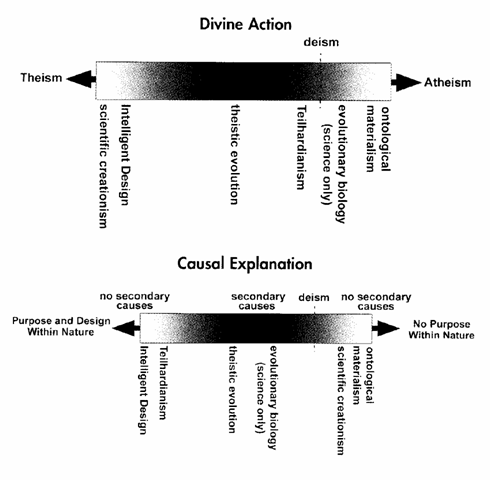If intelligence is a real causal power in the natural world that is not reducible to the law-governed interactions of matter and energy, then how can intelligent design avoid undermining science? This worry can be restated as follows: If two scientists conduct the same experiment in different places and on different dates, and get different results, to infer the action of such an intelligence seems then to undermine science because, in that case, the different results come about from intelligence intervening in the experiment and thereby suspending the laws of nature at the moment of the experiment.
This worry makes two assumptions that are themselves problematic. Let’s start with the reference to “the same experiment.” In what sense are scientists ever conducting the same experiment? There are always differences. And those differences can produce different results even on purely materialistic grounds. Take a chaotic system like the double pendulum: go here and here. Chaotic systems have the feature that even if they appear identical to us (regardless of our precision of measurement), because of sensitivity to initial conditions, their behaviors will be different.
Now, with chaotic systems, one might still argue that if the systems in fact were given identical initial conditions and not merely given initial conditions that appear identical to us, then they would behave identically. Because the equations of motion for dynamical systems are deterministic, there would be merit to this argument provided that the universe as a whole operates according to deterministic equations of motion.
But quantum mechanics doesn’t seem to allow this option, indicating that there are indeterministic processes at the subatomic level. These indeterministic processes can filter up and be amplified by chaotic phenomena, so the ideal of chaos being deterministic at the microlevel can in practice never be sustained. The one way out of quantum indeterminism is to posit some hidden determinism, either through Bohmian hidden variables or quantum many-worlds. But besides constituting speculative interpretations of quantum theory (they are not identical with quantum theory as such), these options have no practical relevance to our initial worry, namely, that identical experimental set-ups should produce identical results. Identity at the quantum level is in principle beyond the power of observers to determine. This is the measurement problem, and its practical import does not go away regardless of one’s interpretation of quantum mechanics.
It appears, then, that reproducibility of experimental results is an ideal to which science aspires and yet an ideal that only makes sense in quite limited circumstances where it is possible to contrain an experimental set-up sufficiently so that similar set-ups lead to similar results. There is no compelling reason, however, to universalize this ideal so that it applies across the board. Indeed, why should we think that different circumstances can be matched up in all relevant respects so that they become law-governed and thus behave identicially?
This brings us to the other faulty assumption in worrying that ID undermines science, namely, that the laws of nature characterizing the interaction of matter and energy are causally complete — in other words, that they completely prescribe the behavior of physical systems. There is no reason to grant this point. Just because certain physical systems when configured in certain ways lead to predictable behaviors does not mean that all physical systems are like this. Alternatively, just because reproducibility holds for some experimental set-ups doesn’t mean that it holds, or should hold, for all experimental set-ups.
Here’s an experimental set-up: a room with a desk, blank music paper, a quill and ink, and Mozart. What laws characterize the music that Mozart is going to write? Put Mozart in that room and let him write some music. Now go back in time and put Mozart back in that same room. Is he going to write the same music? No one knows. Moreover, the integrity of science is not threatened either way.
Bottom line: reproducibility of experimental outcomes is great when you can get it. But there’s no reason to think that you can always get it. In fact, reproducibility should be viewed as the exception rather than the rule. Indeed, most circumstances are far too messy to admit the experimental control that makes reproducibility possible. And to think that this messiness can somehow be eliminated or that it disappears at the fine structure of the universe is itself an unsubstantiated article of faith.
In closing, I want to consider two diagrams from Marty Hewlett and Ted Peter’s book Evolution from Creation to New Creation. How such diagrams locate ID in relation to other views follows directly from faulty views of science like the one addressed here.

Neither of these diagrams does justice to intelligent design. ID is compatible with any form of divine action that makes a difference in the natural world, and this includes everything from Teihardianism to Scientific Creationism on the first diagram. ID makes an epistemic claim about the detectability of design in nature, not about its implementation. As a consequence, the second diagram also misrepresents ID: ID is fine with design working through secondary causes, primary causes, or some combination of the two.
Properly speaking, ID is not a slice on these continua but a swath that includes all slices that take teleology seriously.